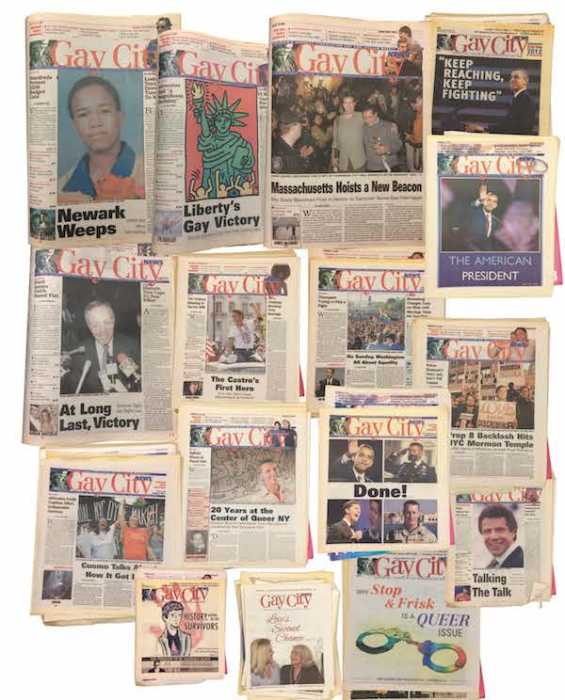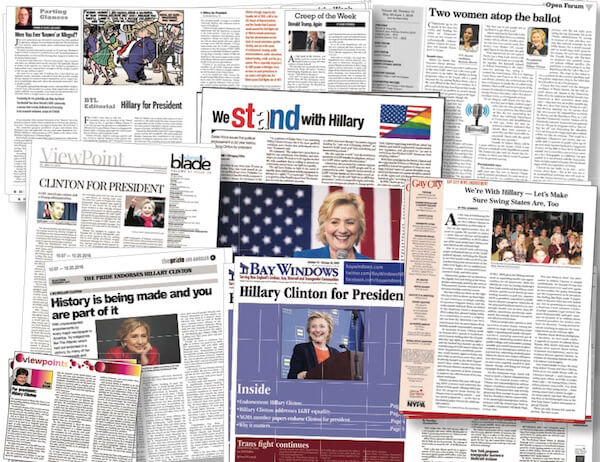BY NATHAN RILEY | Kiss the 1990s goodbye should be the wish of anyone who wants American politics to shift course.
Democrats must overcome their fear of being labeled “too liberal, too long.” Simply put, a party made up of feminists, the LGBTQ community, immigrants, Latinos, blacks, and progressive whites can’t pretend not to be liberal. In the current political climate, pragmatism and idealism walk the same path.
Abundant signs indicate a course correction is underway. In the primary election that nominated Eric Gonzalez as the Democratic candidate for (and presumptive) Brooklyn district attorney, he and the five other candidates argued over “ways to decriminalize poverty and decrease mass incarceration,” reported the New York Times. “They often spent more time discussing the crimes they would not prosecute as district attorney than the ones they would.”
PERSPECTIVE: The Long View
In another borough, Cyrus Vance, the Manhattan DA, recently announced he will not prosecute fare beaters as criminals and has said marijuana legalization is something New York will likely have to confront.
In another sign of the changing times — and the challenges they raise — news stories spotlight the problems California and Massachusetts face starting their tax and regulate systems for recreational marijuana. Voters changed the law by referendum, and now legislators and local communities are expressing reservations that must be addressed. Legal pot is a problem that never existed in the 90s, a decade whose legacy is clouded by harsh penalties for crack cocaine and a ramped-up war on crime.
Democrats are lining up to support Bernie Sander’s Medicare for All proposals, while others pay tribute, in backhanded fashion, to the power of the idea by bitterly complaining he’s creating a “litmus” test for the party’s candidates. The smartest Democrats are responding to Donald Trump by testing new issues and facing some hard truths.
The Democratic brand remains in trouble. The last Wall Street Journal/ NBC poll taken at the start of August showed Trump getting 36 percent positive or somewhat positive responses, while Hillary Clinton, the Democrat who outpolled him by nearly three million votes, got 30 percent. In a Georgia special congressional election earlier this year, Jon Ossoff was defeated, with opposition ads charging he will “vote” with “liberal extremists” for a “bigger government” and a “weaker military.” Another ad urged voters to “stop Jon Ossoff, stop Nancy Pelosi.” The notion of liberal extremists still works for Republicans running for Congress in red, even purple districts.
The developing counter argument is, “Yes we are liberal, but this will mean lower medical bills, cheaper public colleges, and ending mass drug arrests.”
Democratic voters are unsettled as the party searches for issues and a direction. It was Bernie Sanders who first exposed this thirst for change, and he pushed for difficult goals: medicine with no co-pays, public colleges without tuition, and a living wage. These issues remain on the table and represent a sharp departure from the less-government-is-good government days of the ‘90s.
These inspirational goals drive Hillary Clinton crazy because she believes they can’t be realized and it is disingenuous to press them. She has complained they disrupted the Democratic Party in the last election. But such uninspiring pragmatism is flawed. Another pragmatist, Jack Kennedy, who was president while Hillary grew up, pushed for great ideas: creating NASA to send a man to the moon and adopting the nuclear test ban treaty in pursuit of world peace.
In a 1963 commencement address at American University, Kennedy explained the ban would advance the cause of peace “by making it seem more manageable and less remote, we help all people to see it, to draw hope from it, and to move irresistibly toward it.” Potentially, impractical proposals define goals and get people involved. A method clearly understood by Sanders but one that has eluded Clinton’s embrace. This is the reason pragmatism and idealism are walking hand in hand today.
Clearly, Democratic voters are ready for new issues that would have been unthinkable in the days of the drug war and “ending welfare as we know it.” By and large, these new ideas push for social democracy and diminished inequality.
Black voters flex their electoral muscle, reminding us without their votes the Democrats lose, with Clinton in 2016 underperforming Barack Obama’s sweeps in 2008 and 2012. The community’s leaders want support from government officials when its members are shot by police and they voice skepticism when the nation says it has reached full employment while joblessness among black youth remains stuck at 20 percent. Immigrants and their friends are unlikely to let the Democrats deport as many persons as they did during the Obama years. They want pathways to citizenship. Satisfying these concerns require big ideas for economic growth and rising wages. Civil rights require prosperity for all. Once again pragmatism blended with idealism makes for good politics.
The LGBTQ community wants the same protections enjoyed by women, including an end to sexual harassment, job discrimination, and protections for their right to present their gender identity as they choose. We will not play second fiddle in support of policies that seek to placate white voters who chose Trump at the expense of our interests. Big ideas will be an umbrella offering unity to sort out views dear to Democratic constituencies that might otherwise collide.
The move toward a new narrative and new issues seems unstoppable. The reaction to Trump is growing legs, and the Democrats can expect some intraparty friction but the outcome may prove pleasing. Unlike the proverbial tiger, the party may succeed in changing its stripes.


































